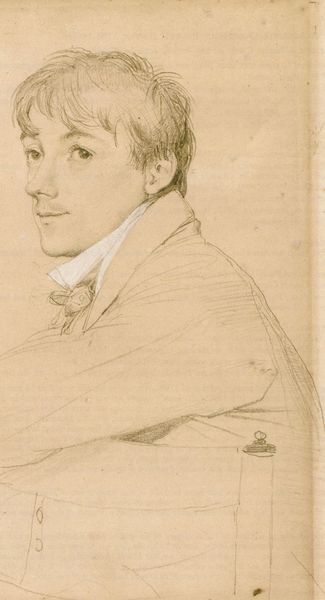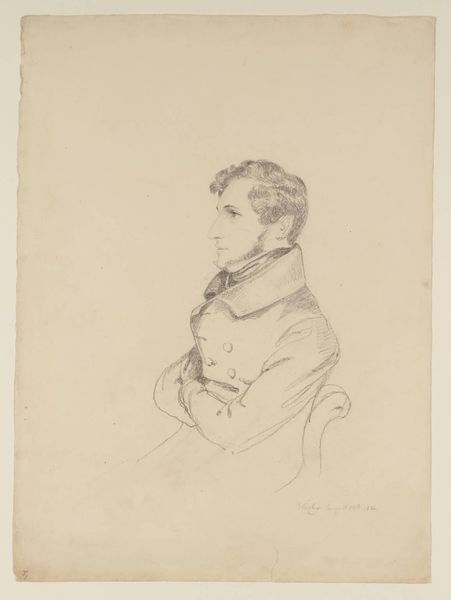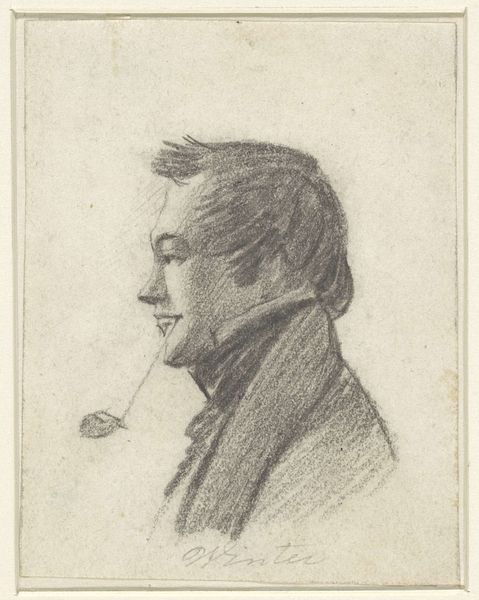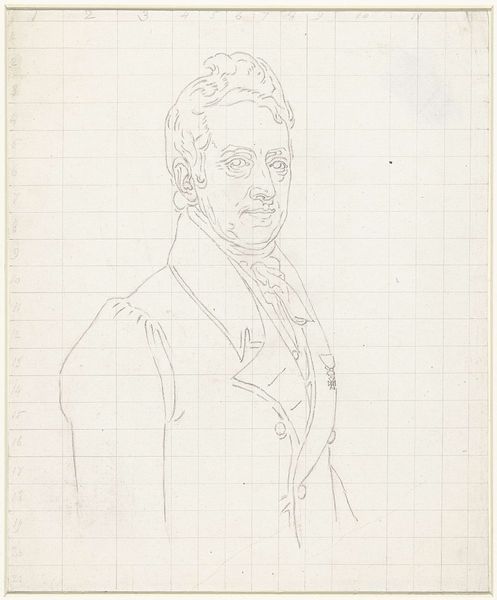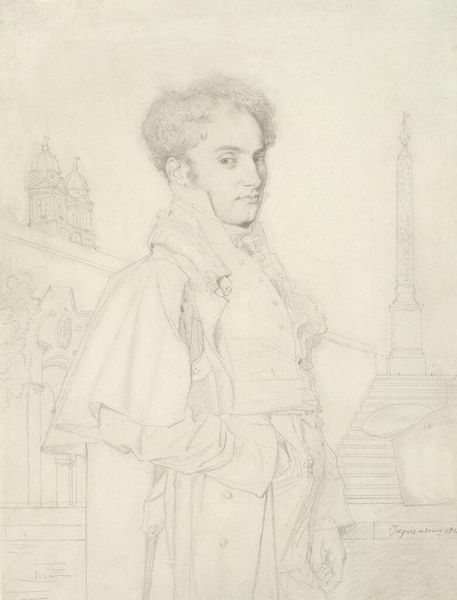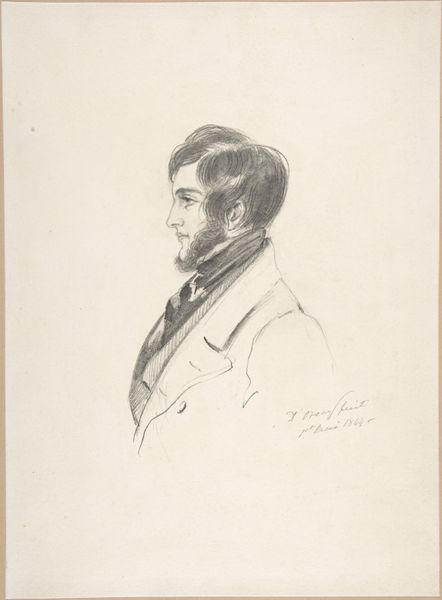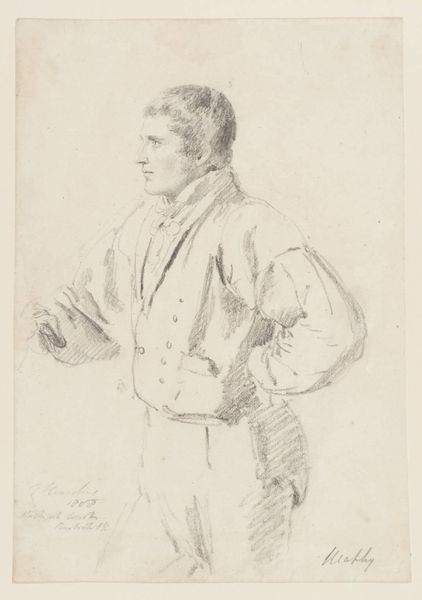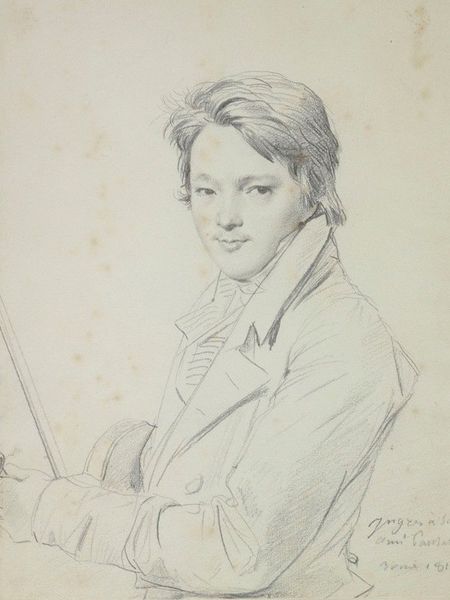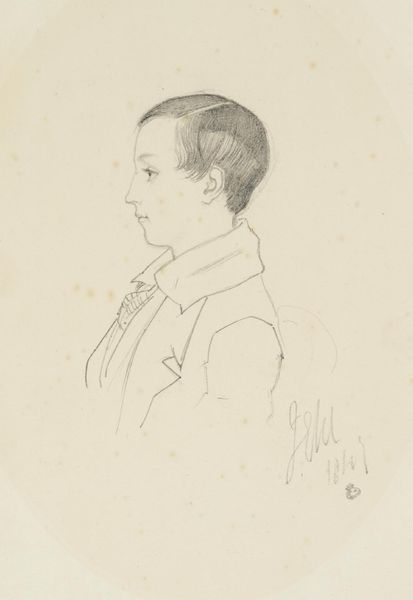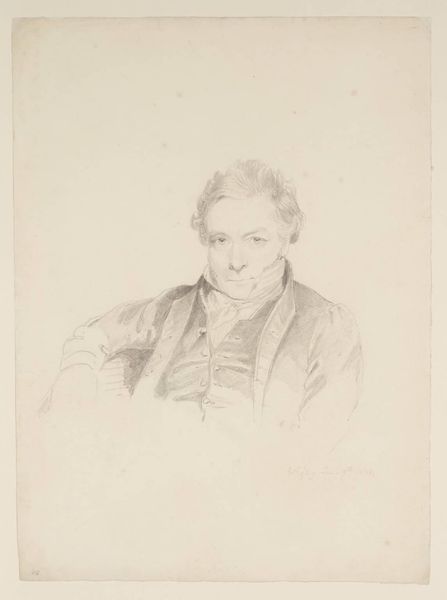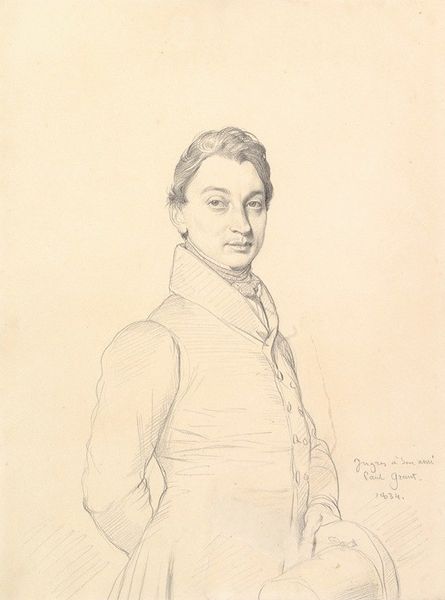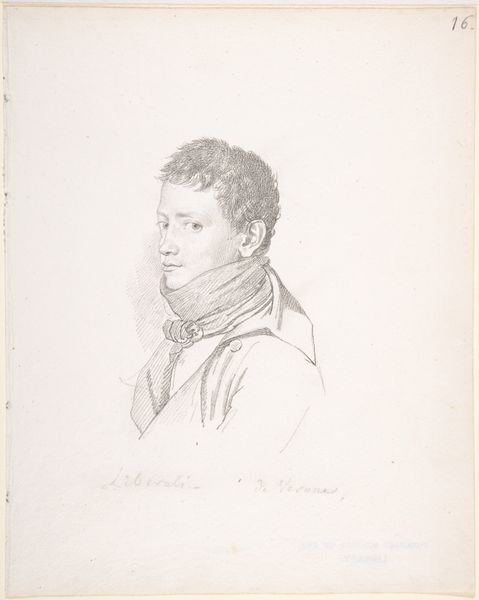
drawing, pencil
#
drawing
#
neoclacissism
#
pencil drawing
#
pencil
#
portrait drawing
#
facial study
#
history-painting
#
academic-art
Copyright: Public Domain: Artvee
Editor: Here we have Ingres’ pencil drawing of Merry-Joseph Blondel, created in 1809. There's an incredible stillness and formality to it. I can’t help but wonder, what's your read on this piece? Curator: For me, this drawing shimmers with a certain reserved intensity. It's a portrait, yes, but almost a ghost of a portrait – so finely rendered it almost evaporates off the page! Imagine Ingres, capturing Blondel in Rome. Both young artists, both swimming in the same Neo-Classical currents, each grappling with the legacy of antiquity. And there, looming in the background, sketched almost as an afterthought, the faint lines of a Roman building—perhaps a nod to that shared inspiration? Editor: It definitely adds a layer, hinting at something bigger. The architectural element isn't super prominent though, so I read the figure first. Did Ingres always capture sitters with such focused detail, or is there something special about his approach here? Curator: Ingres certainly had a sharp eye; his portraits always reveal as much as they conceal. Note the incredible delicacy of the pencil strokes, building up the form in subtle gradations. It’s a masterclass in restraint and precision. He's not just recording a likeness but almost an ideal, wouldn't you agree? A Neo-Classical ideal of masculine beauty, perhaps? Editor: Absolutely. It feels more "perfected" than realistic, maybe idealized as you say. Something about how smooth his face is compared to the light sketchiness everywhere else. This was done early in Ingres's career, wasn't it? Curator: Quite early! He was a hungry, ambitious young artist, soaking up the Roman atmosphere. Perhaps this Blondel is more than a portrait… perhaps it's also a statement of intent? Look at how the very precision hints at a grand career to come. And that's exciting! Editor: Thinking about it as a "statement" really makes me look at the drawing differently. All that latent potential! Curator: And there you have it - the magic of art. We come seeking answers, and leave with even more beautiful questions.
Comments
No comments
Be the first to comment and join the conversation on the ultimate creative platform.
